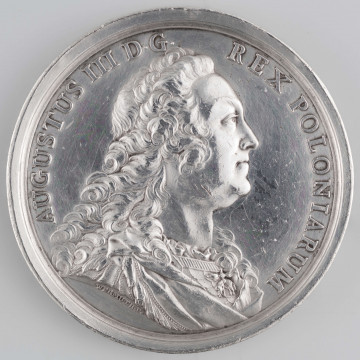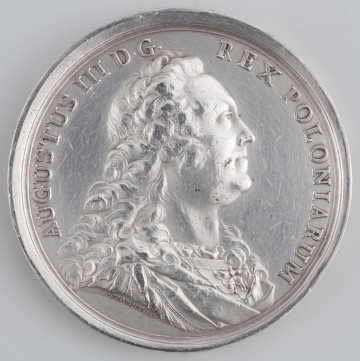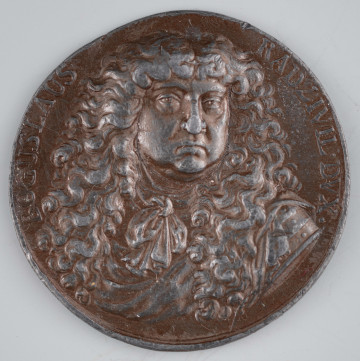
For the feast of the Order of the White Eagle
1762
National Museum in Lublin
Part of the collection: Polish medallic art from the 16th to the 17th c.
In the history of Polish medal-making one can point to centres which at different times became leading in this field of art. In the second half of the 16th century, it was undoubtedly Vilnius. In the next century, the role was taken over by Gdansk, which already had a long tradition in medal-making. The dominance of Gdańsk in creating 17th-century medals was associated with the activity of a relatively small group of people. What is more, in the case of three of them, these people were closely related. We should start with Sebastian Dadler, born in Starsburg, who came to Gdańsk in the 1730s. He spent 15 years in the city on the Vistula River, and besides many medals, he left behind a disciple, a Strasbourg native, Jan Höhn. Höhn settled permanently in Gdańsk and became involved in the local mint. Initially, he expanded his knowledge under Dadler's guidance and he created the first medals together with his master. After Dadler's departure, Jan Höhn took over the duties of the main engraver of Gdańsk. Like his predecessor, he created stamps for minting coins and medals and brought up his successor. It was Jan Höhn's son, who not only inherited his father's talent but also his name. Both Höhns - father and son - signed their works in the same way, with the result that it is often difficult to determine to which of them a given work should be attributed. The stylistic similarity between all the artists mentioned is also difficult to identify. It is not surprising, since three generations of artists who were linked by a master-student relationship are being dealt with.
The presented medal is the work of the last of the artists in question, Johann Höhn the Younger. The work was created to commemorate the Peace of Oliva, which ended the period of the so-called Swedish Deluge. It contains numerous references to antiquity, characteristic both of Dadler and both Höhns. John Casimir, whose portrait adorns the obverse, is depicted wearing a Roman toga and a laurel wreath on his head. The rim of the reverse bears the inscription PAX CASIMIRIANA (Casimir's Peace), referring to the term Pax Romana known from the times of the Roman Empire. On the reverse side, there are also olive trees, symbolically referring, on the one hand, to the fact of concluding the peace, and, on the other, to the place where it was signed, i.e. the Cistercian monastery in Oliva, whose image Jan Höhn placed on the medal as well.
Leszek Poniewozik
Author / creator
Dimensions
cały obiekt:
Object type
medal
Technique
stamp minting
Material
silver
Creation time / dating
Creation / finding place
Owner
The National Museum in Lublin
Identification number
Location / status

1762
National Museum in Lublin

1760
National Museum in Lublin

1669
National Museum in Lublin
DISCOVER this TOPIC
Museum of King Jan III's Palace at Wilanów
DISCOVER this PATH
Educational path